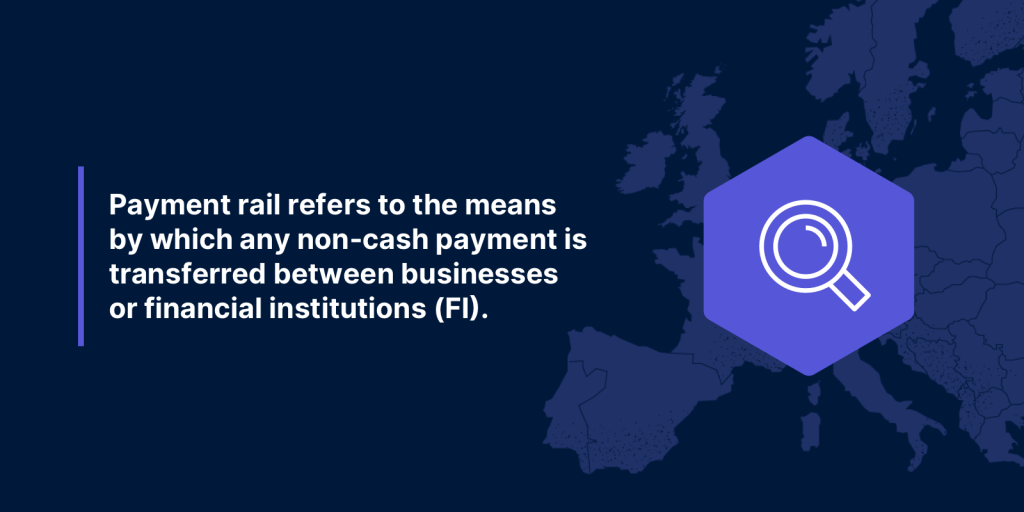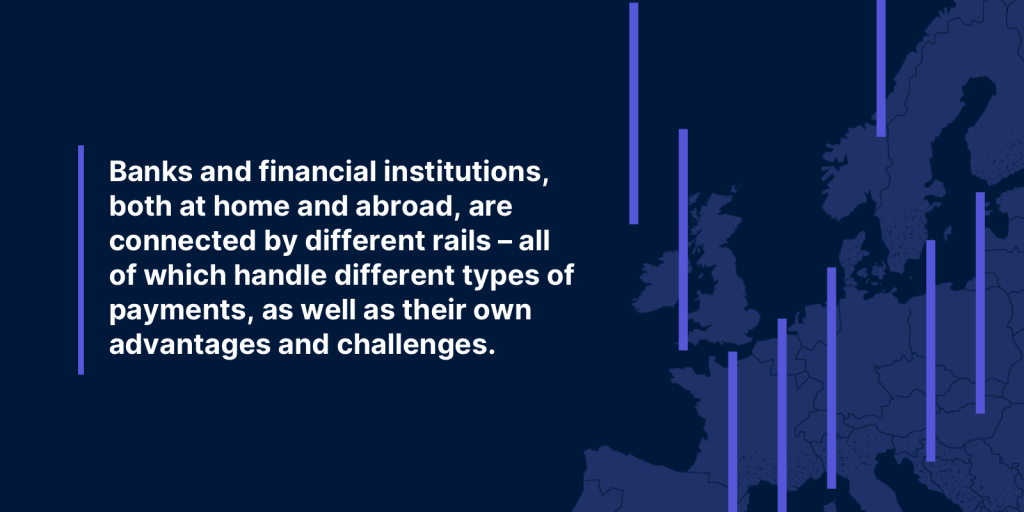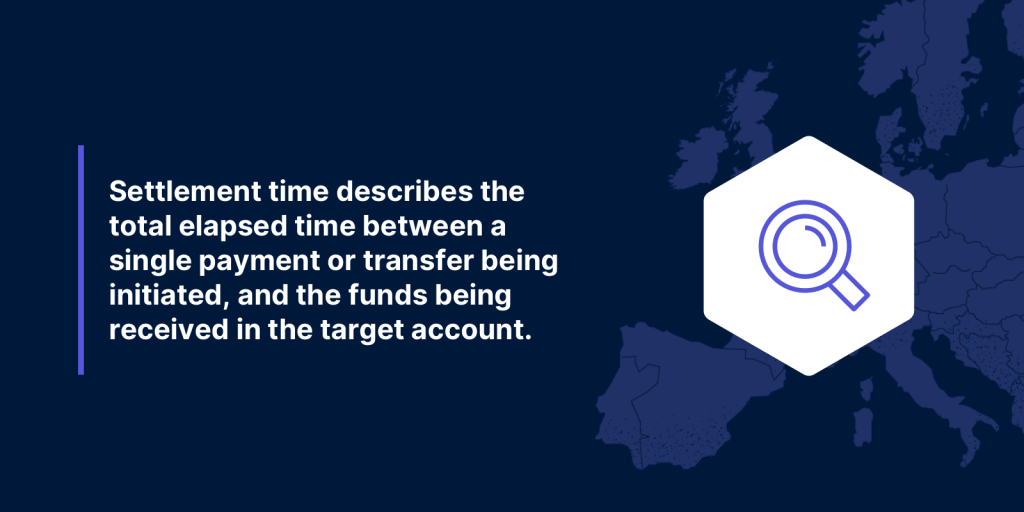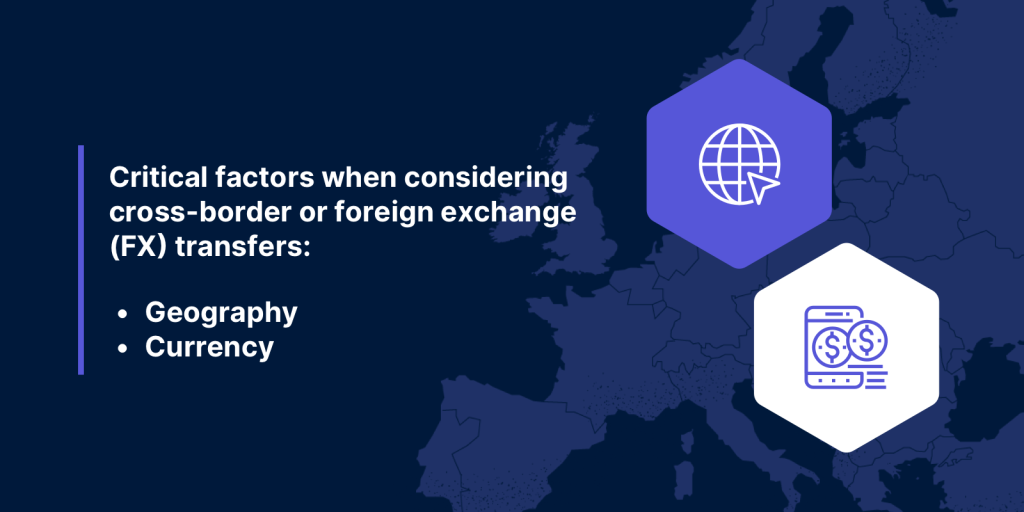No matter their size, scope or sector, all businesses that handle transactions and transfers deal with payment details – and this means dealing with payment rails.
While this topic might seem complex, a smooth payment process (through following payment instructions) directly impacts convenience and the all-important consumer experience (CX).
As payments remain a key part of the embedded finance and banking trend, it is increasingly important to understand the concepts and terms that underpin this vital sector.

What are payment rails?
Starting with the basics, the term ‘payment rail’ refers to the means by which any non-cash payment is transferred between businesses or financial institutions (FI).
Worldwide Interbank Financial Telecommunication (SWIFT) is a global messaging network used by financial institutions to securely exchange information and instructions related to financial transactions. SWIFT relates to demystifying payment rails by providing a standardized and secure communication channel for financial institutions, making international transactions more transparent, efficient, and understandable for all parties involved.
There is no shortage of options within this category – with SWIFT and SEPA (Single European Payment Area) among the best known.
SEPA Instant Credit Transfer (also referred to as SEPA Instant Payment — This mode allows for near real-time fund transfer (less than ten seconds).

While today’s bank accounts and payment transfers / credit transfers are technically wireless sharing of data, this does not mean that funds go from point A to point B without a fixed route.
Banks and financial institutions, both at home and abroad, are connected by different rails – all of which handle different payment method types, as well as their own advantages and challenges.
Navigating the challenges of cross-border payments, significant challenges persist in the cross-border payments ecosystem, despite their importance in driving financial inclusion and business expansion.
Depending on the nature of the two parties involved in a transfer – taking into consideration factors such as the total value of the transaction fees, geography and the type of business/institutions involved – different payment rails can be more or less suitable for different transactions.

What is settlement time?
Another key term to understand when discussing payment rails is ‘settlement time’. This describes the total elapsed time between a single payment or transfer funds being initiated, and the funds being received in the target bank account.
In the simplest possible terms, the shorter the settlement time, the better the user experience, and the greater the benefit for the attached businesses/FIs.
Average settlement times for national and international transfers have decreased considerably in recent years, but faster payment processing is more important than ever for businesses and their payment partners.
As with many things in life, convenience is king – so the end goal of payments processing is to ensure a smooth, speedy experience for the consumer. Today, consumers are expecting their payments to be handled by the relevant business/bank account/FI faster and faster, with in-country transfers often being settled in a matter of seconds.
Real-time, instant payments are the northstar for payment providers, offering the most seamless, convenient experience possible.

Cross-border or foreign exchange (FX) transfers
While one payment rail might offer real-time transfers within the same country, that same rail might prove untenable for international or even intercontinental transfers.
When considering cross-border or foreign exchange (FX) transfers, geography and currency are critical factors.
When considering international expansion, decision-makers must weigh up the potential benefits of accessing new markets and demographics in different countries against the potential cost incurred through cross-border payments.
Meanwhile, ensuring that the chosen rails do not significantly increase payment friction for customers is paramount.
Understanding the payments landscape: our latest research.
Selecting the right payment rails
While payment rails remain a complicated, technical topic, the scope of the potential benefits available for consumers and businesses means that understanding them is well worth the effort.
Selecting the right payment rail is critical to success – that’s why choosing a payment partner with knowledge and experience is key to making the right decision.
To ensure a seamless and convenient payment experience for your customers and a brighter future for your business, book a call with Vodeno today and ensure that you end up on the right track with the right payment service provider.



